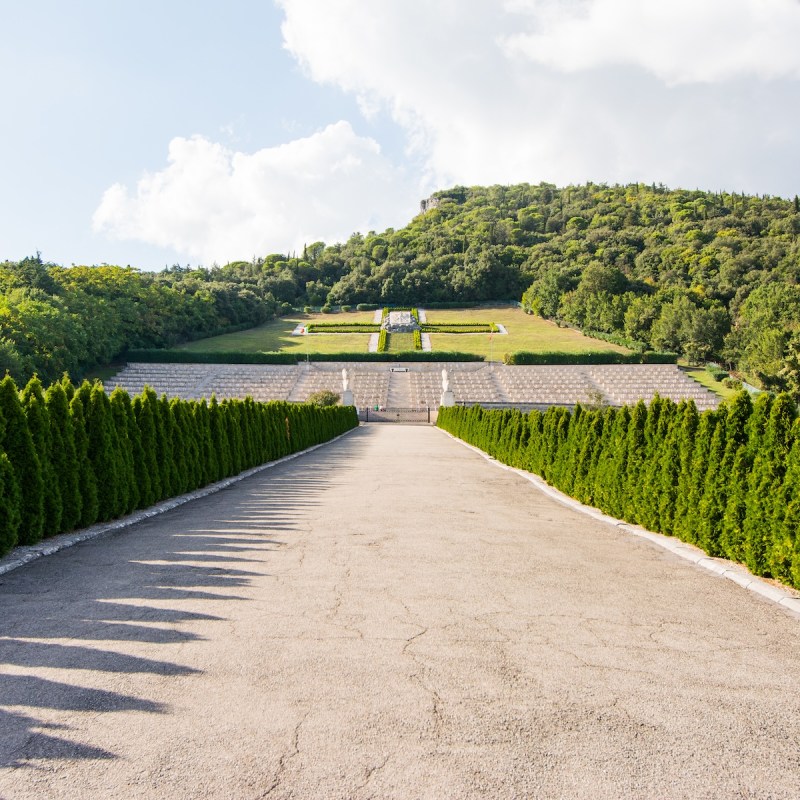
World War II was a catastrophic event that reshaped the world. In Europe, it resulted in millions of casualties, destruction of cities, and displacement of people. The war was fought on multiple fronts, from the shores of Normandy to the streets of Berlin.
Videos by TravelAwaits
It saw the emergence of new technologies in warfare, including the atomic bomb. WWII ended with the defeat of Nazi Germany and the formation of new alliances that shaped the post-war world order.
Europe houses some of the most historically significant sites related to WWII. These sites include battlefields, museums, and memorials that offer a unique and informative perspective on the war.
1. Malta
Malta played a crucial role in WWII as a strategic base for the British Royal Navy and the Allied forces. Axis powers heavily bombed the island because of its location in the Mediterranean Sea. Malta was the most bombed location during the war, but it remained resilient and never surrendered.
The Siege of Malta lasted for over 2 years and the islanders endured great suffering and sacrifice. Ultimately, Malta’s contribution to the war effort was significant, as it disrupted Axis supply lines and helped secure Allied control of the Mediterranean.
You can learn more about Malta’s wartime heritage through museums, fortifications, memorials, and other sites. Valletta, Malta’s capital, has several war museums, including the National War Museum and the Malta at War Museum.
2. France
France was significant in WWII. After being invaded by Nazi Germany in 1940, the country was divided into two zones: the German-occupied north and the Vichy regime in the south. The French Resistance fought against the German occupation and collaborated with the Allies to liberate the country.
The Normandy landings, also known as D-Day, were a series of Allied invasions of Normandy, France, in 1944 — ultimately leading to Paris’s liberation.
Explore France’s WWII history through museums, memorials, and battlefields. The Normandy beaches of Utah, Omaha, Gold, Juno, and Sword — where the Battle of Normandy and the D-Day landing took place — are popular self-drive tours.
3. Italy
Italy was initially allied with Nazi Germany during WWII. Still, after the fascist regime was overthrown in 1943, the country switched sides and joined the Allies. Italy was heavily bombed by the Allied forces during the war and the Italian Resistance played a significant role in the country’s liberation.
The Battle of Monte Cassino was a decisive victory for the Allies, which opened the way to Rome. Despite the country’s initial alliance with the Axis powers, Italy’s contributions to the Allied war effort were significant.
Immerse yourself in Italy’s wartime history by visiting museums, memorials, and battlefields, such as the Monte Cassino War Cemetery and the Gothic Line Museum.
4. Germany
Germany played a powerful role in WWII as the aggressor and leader of the Axis powers. Adolf Hitler and the Nazi regime sought to expand territories and establish a new order in Europe.
The country was responsible for some of the most significant atrocities of the war, including the Holocaust and the invasion of the Soviet Union.
Germany’s wartime history can be confronted when visiting museums and memorials, such as the Holocaust Memorial in Berlin and the Concentration Camp Memorial Site at Stadt Dachau.
They are somber reminders of the devastation and loss of life caused by the war.
5. Poland
Poland was the first country to be invaded by Nazi Germany on September 1, 1939. Despite fierce resistance, Poland was quickly defeated and occupied for the entirety of the war.
The country, however, did not surrender. Polish forces fought alongside the Allies throughout the war and Polish pilots played a crucial role in the Battle of Britain. The war resulted in the death of millions of Polish citizens and the country was left devastated.
Poland has numerous museums, memorials, and other sites commemorating the country’s sacrifices and contributions during the war. A trip to Warsaw might include the Mausoleum of Struggle and Martyrdom, Pawiak Prison at Dzielna Street, and the Remains of the Ghetto Wall.
Conclusion
WWII history buffs should visit Europe to explore the sites of some of the war’s most significant events. From the Normandy beaches in France and the Battle of the Bulge in Belgium to the Auschwitz concentration camp in Poland and the Berlin Wall in Germany, there are countless locations that offer a glimpse into the past.
History buffs can walk through museums and exhibitions that showcase the war’s impact on Europe and the world. These experiences allow you to better understand the war and its lasting effects, making it an essential trip for any history enthusiast.
